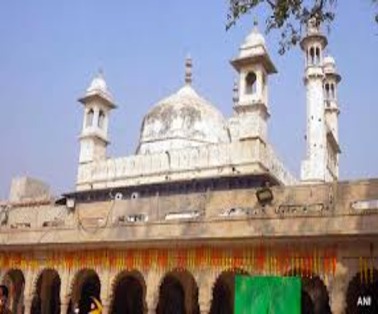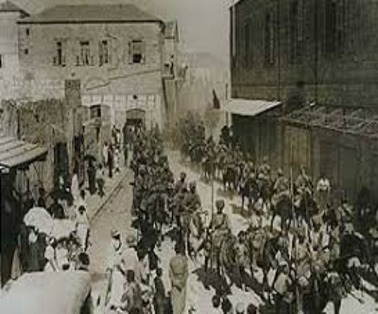The Places of Worship Act was introduced to prevent eruption of new Babri-Ram temple-like disputes and to usher India onto a path of durable communal peace But, the recent riots in Sambhal (UP) that left 5 dead show why the Act is comatose
Almost a week after a district court in Sambhal mandated a survey of the Shahi Jama Masjid, violence erupted in the town of western Uttar Pradesh, The court’s directive followed a petition asserting that the Jama Masjid in Sambhal was constructed on the grounds of a pre-existing Hindu temple. This claim mirrors similar controversies involving the Gyanvapi Mosque in Varanasi, the Shahi Idgah in Mathura, and the Kamal-Maula Mosque in Dhar, Madhya Pradesh.
Places Of Worship Act, 1991
- It was passed in 1991 by the P V Narasimha Rao-led government.
- The law seeks to maintain the “religious character” of places of worship as it was in 1947 — except in the case of the Ram Janmabhoomi-Babri Masjid dispute, which was already in court.
- The law was brought in at the peak of the Ram Mandir movement, exactly a year before the demolition of the Babri Masjid.
- Introducing the law, then Home Minister S B Chavan said in Parliament that it was adopted to curb communal tension.
Objectives of the Places of Worship Act

Sambhal Mosque Dispute
- A petition filed in the Sambhal district court claims that the 16th-century Jama Masjid was built on the grounds of an ancient Hari Har Mandir, echoing similar claims regarding mosques in Varanasi, Mathura, and Dhar. The petitioners have requested a survey to examine the historical and religious significance of the site.
- The Shahi Jama Masjid is a protected monument under the Ancient Monuments Preservation Act of 1904 and is recognized as a Monument of National Importance by the Archaeological Survey of India (ASI), which adds both legal and cultural complexity to the dispute.
Court-Ordered Surveys and Unrest in Sambhal
- A photographic and videographic survey was initially carried out peacefully with the presence of local authorities and mosque committee members.
- However, during a second survey, violent clashes broke out. The arrival of a petitioner with a crowd chanting slogans led to protests near the mosque.
- Allegations emerged that the police fired upon protesters, resulting in the deaths of five people, including teenagers. Locals accused the police of using excessive force and causing property damage, but the police have denied these allegations.
Concerns Raised by Locals
- Locals argue that the survey order was issued immediately after the petition was filed, without any thorough legal examination of the validity of the Hindu side’s claims.
- Additionally, the survey was conducted before the petition could be challenged in higher courts, bypassing essential procedural safeguards.
Historical Significance of Sambhal Jama Masjid
The Sambhal Jama Masjid was constructed during the reign of Mughal Emperor Babur (1526–1530) by his general, Mir Hindu Beg. The mosque is a prime example of early Mughal architecture and is one of three mosques built during Babur’s reign, with the other two being the mosque in Panipat and the Babri Masjid in Ayodhya, which was demolished in 1992.
- The mosque is located on a hill at the center of Sambhal.
- It features a large square mihrab hall with a dome, flanked by arches.
- Built with stone masonry and plaster, the design is reminiscent of other Mughal structures, such as the mosque in Budaun.
- The mosque underwent repairs during the reign of Emperors Jahangir and Shah Jahan in the 17th century.
- Some scholars suggest the mosque might have Tughlaq-era origins, with Babur making modifications.
- Local traditions also claim the mosque incorporates remnants of a Vishnu temple, believed to be the site of the arrival of Kalki, the tenth avatar of Vishnu.
Legal Context: The Places of Worship Act, 1991
- The ongoing Sambhal Mosque dispute has brought the Places of Worship Act of 1991 back into focus. This law requires the religious character of all places of worship to remain as it was on August 15, 1947, with the exception of the Babri Masjid case.
- Section 3 of the Act prohibits the conversion of religious sites into those of different religious denominations.
- The petitioners in the Sambhal case are seeking to alter the mosque’s religious character, directly contradicting the 1991 Act.
- Petitioners have pointed to remarks made by Justice D.Y. Chandrachud in 2022, suggesting that determining the religious character of a site may not necessarily violate the Act.
History Of Gyanvapi Mosque
- The Gyanvapi Mosque was built in 1669 during the reign of the Mughal emperor Aurangzeb
- Aurangzeb ordered the demolition of the existing Vishweshwar temple at the site, and its replacement by a mosque.
- The plinth of the temple was left untouched and served as the courtyard of the mosque. One of the walls too was spared, and it became the qibla wall, the most important wall in a mosque that faces Mecca.
- The name of the mosque is said to have derived from an adjoining well, the Gyanvapi, or Well of Knowledge.
- An old sculpture of the Nandi bull inside the compound of the present Kashi Vishwanath Temple faces the wall of the mosque instead of the sanctum sanctorum of the temple
Gyanvapi Mosque Dispute
- The fundamental basis of all legal actions is that a Hindu temple was demolished in the past and replaced by a mosque at the same location.
- The most recent instance of destruction is attributed to the time of Mughal Emperor Aurangzeb’s rule.
- The temple faced destruction on at least two earlier occasions. In 1194 CE, it was attacked by Aibak, and during Queen Raziya’s brief and tumultuous reign (1236-1240), the site was taken over, resulting in the construction of a mosque
- The temple was reconstructed during Akbar’s reign, only to be demolished again during Aurangzeb’s rule.
- Interestingly, a section of the temple was intentionally preserved as the rear wall of the mosque, which ironically came to be known as the Gyanvapi mosque, named after the sacred site it occupied.
- Presently, the Gyanvapi Mosque and the Kashi Vishwanath Temple exist in close proximity, indicative of their intricate history of destruction and subsequent reconstruction.
The Legal Challenge: Places of Worship Act
- Whether or not the litigants from the Hindu side are restricted by the Places of Worship Act, 1991.
- Section 4 of the mentioned Act stipulates that “the religious character of a place of worship existing on the 15th day of August, 1947, shall continue to be the same as it existed on that day”.
- In the ongoing case, the Muslim party contends that allowing the current lawsuit would fundamentally alter the mosque’s character, which has remained constant for over 600 years.
- On the other hand, Hindu petitioners argue that regular prayers to Hindu deities inside the mosque complex were offered until 1993, and subsequently, prayers were permitted annually on a specific day.
- Based on this stance, the Varanasi court concluded in its ruling that the Places of Worship Act does not prohibit civil suit.
- Now, the Hindu side is battling for declaring the Worship Act null and void altogether
Kashi Vishwanath Temple
- Details about the Shiva temple is described in the Kashi Khanda of Skanda Purana.
- The temple was constructed by the Hari Chandra in the 11th century.
- The present Kashi Vishwanath Temple was built in the 18th century by Rani Ahilyabai Holkar of Indore, immediately to the south of the mosque.
- The temple stands on the western bank of the holy river Ganga, and is one of the twelve Jyotirlingas, the holiest of Shiva temples.
- The main deity is known by the name Vishvanatha or Vishveshvara meaning Ruler of The Universe.
- The two domes of the temple were covered by the gold offered by the Punjab Kesari Maharaja Ranjeet Singh in 1839.
- Many Hindus have long believed that the original lingam of the erstwhile Vishweshwar temple was hidden by the priests inside the Gyanvapi well during Aurangzeb’s raid
To Download Monthly Current Affairs PDF Click here
Get Inspiration from CLAT 2025 Topper
Click here to get a free demo
Everything About CLAT 2025



